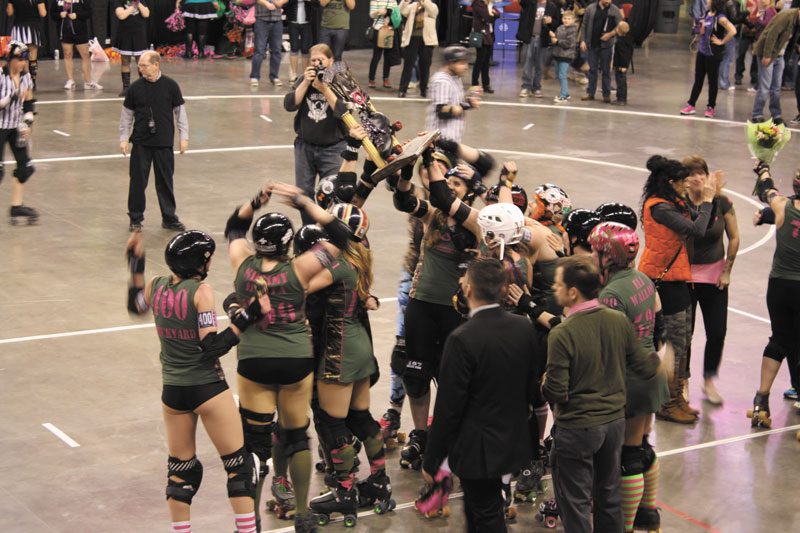Bodies fly in Queeny Park, where dozens of women in spandex play roller derby on Saturday nights. In front of an enthusiastic crowd, the Arch Rival Roller Girls battle at Midwest Sport Complex in what one player calls “football on skates.”
Fans cluster in the stands or sit on the ground around the edges of the track, drinking cans of PBR and hollering at their favorite players. The league’s jeerleaders (cheerleaders with attitude) fling towels into the crowd with a slingshot. When the ladies skate out, there are plenty of tattoos on display, and also many bruises, badges of honor earned during rough practices and games. Women of all physiques, ages 18 through the early 40s, are drawn by the opportunity to compete, exercise and make friends. “It’s a way of life: the camaraderie of being with other strong, athletic women who have the same goal of having fun and doing something out of the norm,” says Cari Wohlrabe, a recently retired blocker for the Smashinistas, one of four St. Louis teams.
While the sport has evolved from its early days as choreographed entertainment, there’s still a bit of showmanship involved. Skaters personalize their aggressive makeup and accessories to express themselves and intimidate their opponents, and each has a carefully selected nickname emblazoned on the back of her jersey. These noms de derby are sometimes risque and always clever; Wohlrabe played as The Forecloser, a reference to her job as a residential mortgage lender at a bank.
It can take a first-time fan a while to figure out how the sport is played. Of the five players from each team skating around the circular track, one woman is designated the jammer, and she attempts to pass other skaters in order to score points. The rest of the players act as blockers, using their bodies to impede the opposing jammer’s path or force her out of bounds. If a jammer laps all of the opposing team’s blockers, she’s the lead jammer with the power to control the length of the round, called a jam, signaling when she wants it to end by pounding on her hips. “It’s got a lot to do with strategy, which, if you don’t do derby, you don’t realize,” Wohlrabe explains.
With all that physical contact, injuries are to be expected. “What you find with blockers and jammers are knee injuries, broken ankles, broken wrists. Those are unavoidable,” Wohlrabe says. “I had a concussion once because I got hit hard. I’ve had black eyes, and I had a sprained ankle once.” But players get over their fear pretty quickly. “You can’t be afraid,” Wohlrabe says. “You have to be ready to get hit by girls who are a lot bigger than you.”
There are plenty of hits tonight. Blockers pack in tight and await the impact of the jammer, who rams into them, trying to break through. She finally escapes and races around the track, graceful yet fierce. Fans cheer as she racks up points, dodging blockers and holding off the other jammer by hugging the inside curve. Exhausted, she calls off the jam and slides into a chair on the sidelines.
At the end of the bout, the players roll out to sign autographs for wide-eyed little girls. They’re panting, sweating and nursing wounds—but for derby girls, the night is young. After a shower and a snack, they’re headed out to the Grove for their famous after-party at Atomic Cowboy.
by Rebecca Koenig








